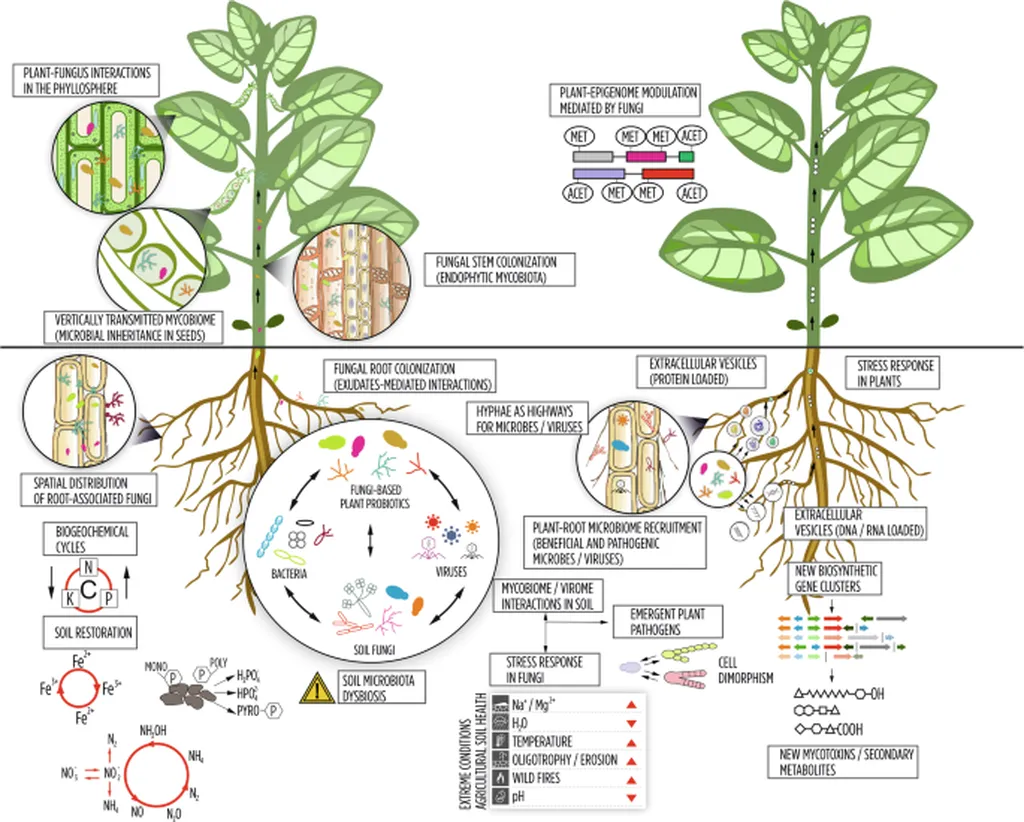In the quest for more sustainable agricultural practices, a recent review published in the journal *Selianchiukos Agronomichnos Naukos ta Praktika* (Agricultural Science and Practice) sheds light on the intricate world of plant-fungus symbiotic relationships. Led by A. S. Kyslynska, the research delves into the mechanisms behind mutualistic interactions between plants and fungi, exploring their potential applications as biofertilizers, bioprotectors, and bioregulators.
The study highlights that root mycorrhization, a process where fungi colonize plant roots, significantly boosts plant growth, activates metabolic processes, and enhances overall plant development. “Mycorrhizal fungi account for about 10% of identified fungal species, including essentially all of the Glomeromycota and substantial fractions of the Ascomycota and Basidiomycota,” Kyslynska notes. This symbiotic relationship is not limited to angiosperms and gymnosperms but extends to bryophytes, ferns, and mosses as well.
The review distinguishes various types of mycorrhizal associations, such as arbuscular, ericoid, arbutoid, monotropoid, orchid mycorrhiza, and ectomycorrhiza, each with unique structures and interactions. Kyslynska emphasizes the bidirectional mechanism of nutrient exchange and other mutual benefits, stating, “The type of interaction depends on both micro- and macrosymbiont; it may in some cases and for some organisms fluctuate from mutualistic, commensalistic to antagonistic, even parasitic interactions.”
The implications for agriculture are profound. By understanding these symbiotic relationships, farmers can leverage fungi to improve crop resilience, nutrient uptake, and overall productivity. This could lead to a reduction in the use of chemical fertilizers and pesticides, promoting more sustainable and “greening” agricultural practices.
Moreover, the research underscores the role of microscopic saprophytic fungi in plant adaptation to abiotic and biotic stressors. These fungi, capable of penetrating plant roots, play a critical role in enhancing plant biomass and improving food traits. As Kyslynska points out, “A better understanding of the diverse roles of symbiotic microorganisms in ecosystems will improve the ways of their application in agriculture.”
The study’s findings could revolutionize the agricultural sector, offering new avenues for soil restoration and ecosystem management. By harnessing the power of symbiotic fungi, farmers and agronomists can develop more resilient and productive agricultural systems, ultimately contributing to food security and environmental sustainability.
As the world grapples with the challenges of climate change and resource depletion, this research provides a glimmer of hope. By delving into the intricate world of plant-fungus interactions, Kyslynska and her team have opened up new possibilities for sustainable agriculture, paving the way for a greener and more resilient future. The review, published in *Agricultural Science and Practice*, serves as a testament to the potential of symbiotic relationships in shaping the future of agriculture.

